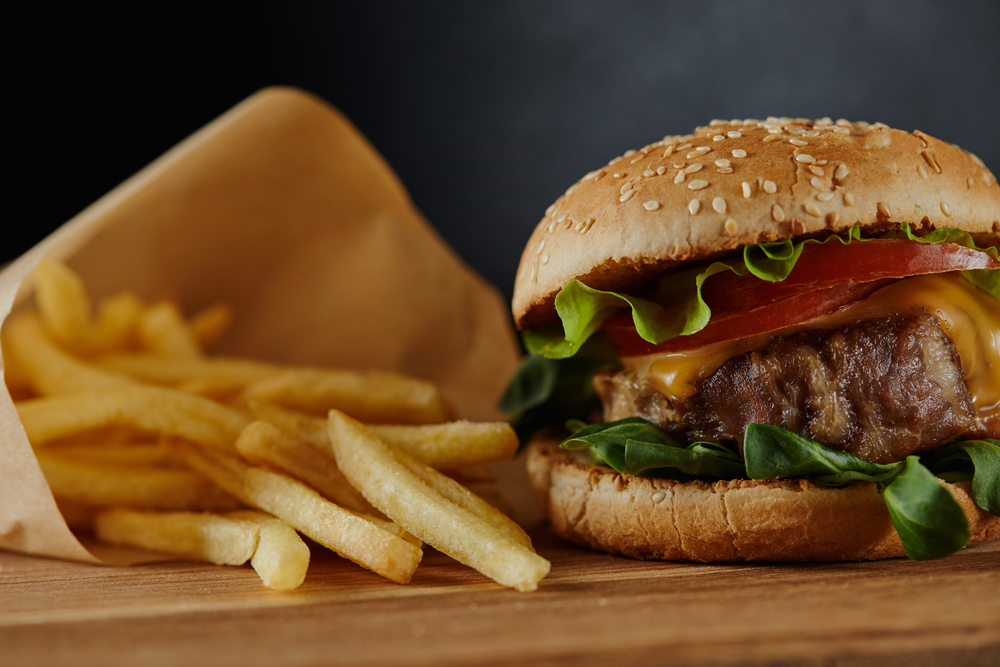There is a new link between the gut-brain axis — and it appears to fuel our desire for fatty foods.
In a new study published in Nature, scientists at Columbia’s Zuckerman Institute discovered that fat entering the intestines of mice triggers a signal. This signal — conducted along nerves to the brain — drives cravings for fatty foods. The findings raise the possibility of interfering with this gut-brain connection to help prevent unhealthy choices and address overeating.
“We live in unprecedented times, in which the overconsumption of fats and sugars is causing an epidemic of obesity and metabolic disorders,” said first author Mengtong Li, PhD, a postdoctoral researcher in the lab of the Zuckerman Institute’s Charles Zuker, PhD, supported by the Howard Hughes Medical Institute. “If we want to control our insatiable desire for fat, science is showing us that the key conduit driving these cravings is a connection between the gut and the brain.”
In previous work, Zuker lab researchers found that glucose activates a specific gut-brain circuit that communicates to the brain in the presence of intestinal sugar. Calorie-free artificial sweeteners, in contrast, do not have this effect, explaining why diet sodas can leave us feeling unsatisfied.
“Our research is showing that the tongue tells our brain what we like, such as things that taste sweet, salty or fatty,” said Dr. Zuker, who is also a professor of biochemistry and molecular biophysics and of neuroscience at Columbia’s Vagelos College of Physicians and Surgeons. “The gut, however, tells our brain what we want, what we need.”
Study Details
Dr. Li wanted to investigate how mice respond to dietary fats, lipids, and fatty acids that every animal must consume to provide the building blocks of life. She offered mice bottles of water with dissolved fats, including a component of soybean oil, and bottles of water containing sweet substances known to not affect the gut but that are initially attractive. The rodents developed a strong preference, over a couple of days, for fatty water. They formed this preference even when the scientists genetically modified the mice to remove the animals’ ability to taste fat using their tongues.
The researchers reasoned that fat must be activating specific brain circuits driving the animals’ behavioral response to fat. To search for that circuit, Dr. Li measured brain activity in mice while giving the animals fat. Neurons in one region of the brainstem, the caudal nucleus of the solitary tract (cNST), perked up. This was intriguing because the cNST was also implicated in the lab’s previous findings around the neural basis of sugar preference.
Dr. Li then found the communications lines that carried the message to the cNST. Neurons in the vagus nerve, which links the gut to the brain, also twittered with activity when mice had fat in their intestines.
Having identified the biological mechanisms underlying a mouse’s preference for fat, Dr. Li next took a close look at the gut itself: specifically, the endothelial cells lining the intestines. She found two groups of cells that sent signals to the vagal neurons in response to fat.
“One group of cells functions as a general sensor of essential nutrients, responding not only to fat, but also to sugars and amino acids,” said Dr. Li. “The other group responds to only fat, potentially helping the brain distinguish fats from other substances in the gut.”
Dr. Li then went one crucial step further by blocking the activity of these cells using a drug. Shutting down signaling from either cell group prevented vagal neurons from responding to fat in the intestines. She then used genetic techniques to deactivate either the vagal neurons themselves or the neurons in the cNST. In both cases, a mouse lost its appetite for fat.
Conclusion
We demonstrate the fundamental role of these nutrient-sensing circuits by showing that genetic or pharmacological blockade of sugar and fat gut-to-brain signals at any of the 4 stages following ingestion, abolished the development of nutrient preference: (1) by preventing sugar or fat binding to their corresponding intestinal receptors, (2) by blocking the activated gut cells from signaling to the vagal neurons, (3) by silencing the sugar- or fat-activated vagal neurons and preventing the transfer of their signals to the brain, and (4) finally, by preventing the cNST neurons that receive the gut-brain signals from broadcasting the presence of intestinal sugar or fat to the rest of the brain.





